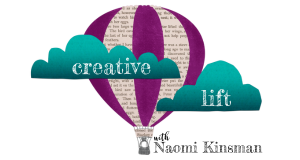
How often do you think about your thinking?
Thinking patterns are largely invisible. For efficiency’s sake, our brains learn the steps of various thinking tasks and run them on autopilot. For instance, if you tried to describe the steps involved in making a decision, you might find yourself at a loss. Well … I just choose. And the process feels like that, too. One minute you don’t know what you’ll eat for lunch and the next, you’re tossing together a Caprese salad.
Here’s what happened behind the scenes. You’ve identified a problem: you’re hungry. You’ve considered criteria: I’m trying to eat whole, healthy food. You’ve brainstormed options: I have tomatoes, arugula, mozzarella, bread … what can I make? You’ve evaluated options: I feel like something cool because it’s hot out today … a salad sounds better than a toasted sandwich. And then, based on all of this thinking, you chose. Collapsing all of that thinking into a second or two is an amazing, highly productive function of our brains. However, the same functions that speed up our thinking can cause us to become set in our ways. Worse, sometimes the split-second thinking breaks down. What if we go through the process, arrive at the Caprese salad solution, and then think … meh? If we don’t know what steps brought us to this decision, we struggle to rewind, revise, and come to a new solution. So, a block––small or large––sets in.
The Ways We Block Ourselves
Picture a classroom of third graders. Today, their teacher has posed a challenge. In groups of four, the students must come up with a product they can create and sell. Imagine that in one group, the teacher has placed the most extreme big-idea thinker in class alongside the most practical thinker. The conversation might go:
Theo: I have the best idea. We can sell magic beans.
Jessica: There’s no such thing as magic beans.
Theo: Ooh! We can put them into bags and make people think they’re magic.
Jessica: People won’t think they’re magic.
Theo: But we can put on a magic show and convince them.
Jessica: (raising a doubtful eyebrow) That won’t work.
Theo: Okay, then, let’s sell a potion that cures hiccups.
Jessica: There’s no such thing.
And round and round, the conversation goes.
The thing is, both Jessica and Theo are right. Each of Theo’s products have the potential to turn a profit. On the other hand, Jessica is pointing out important holes in Theo’s plans with her objections. When Jessica and Theo are both working full-steam simultaneously, no progress can be made. Further, both students are becoming more frustrated by the minute. Soon, they’ll be too emotional to discuss the problem at all.
The Dreamer and the Critic
We each have a Theo and a Jessica living in our minds. When we let them both loose on a problem at the same time, we dig ourselves deeper and deeper into a creative ditch. In a situation such as our Caprese salad conundrum, when our natural decision making process doesn’t provide a useful solution, often Theo and Jessica both leap into action. Turkey sandwich! Too dry! Yogurt and granola! That’s breakfast! Chipolte! I don’t have time to go out!
Research is now showing that the way our brains function in the right and left hemispheres isn’t as cut and dried as we once thought. That said, we do know that the two modes of thinking need breathing room. When we’re trying to dream big, we must learn to pause our inner critic. When we’re analyzing and refining a solution, we need our inner dreamer to stop offering new ideas.
Structuring our Thinking
Most situations don’t call for structured thinking. We can rely on our brains and their efficient ability to shortcut our decision-making process. However, when we find ourselves feeling stuck, structured thinking can be highly useful. We may need to be intentional about leaving Jessica in another room in order to let Theo dream freely. Then, we can ask Theo to exit, and rely on Jessica to evaluate the ideas and craft a practical course of action.
Most people have more creative ideas than they give themselves credit for having. The issue is not that they don’t have ideas, but that they dismiss them too quickly. Other people are overwhelmed with unusable ideas because they don’t know how to sort, organize and develop their piles of thoughts. We need Theo AND Jessica. We need to give them both room to shine.
The Dot Exercise
Here’s a quick thinking tool for you. Start with a large piece of paper and a pen. Title your page with a problem you’re working to solve. Then, give youself full permission to write any possible solution that pops to mind. If any “but” thinking shows up, gently lead Jessica back out of the room. Take at least three minutes to brainstorm. Next, take out colored dot stickers. Place dots next to any ideas that seem plausible. Then, place a second colored dot next to ideas that you’d be excited to try. The goal of the Dot Exercise is to first come up with a set of ideas, and then funnel them down to a workable set of options. Last week, I wrote about the POINT process, which is a fantastic next step for exploring a few ideas deeply in order to make a final decision.
Which of the two voices is louder in your mind––Jessica or Theo? How might you split up tasks to utilize each of their strengths? I’d love to hear about what you’re discovering. Share below, share on Facebook or Twitter, share in any way you like. I love hearing from you.
